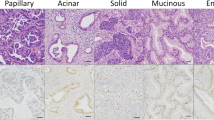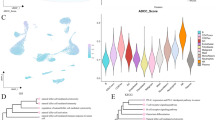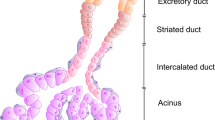Abstract
Lifestyle factors, including smoking, have been linked to neoplastic diseases, and reports suggest an association between smoking and overexpression of FGFR (fibroblast growth factor receptor) in certain neoplasms. This study aims to assess the expression of FGFR3 and FGFR4 genes in patients with and without a history of smoking.
A total of 118 participants were recruited, including 83 Juvenile Nasopharyngeal Angiofibroma (JNA) patients and 35 healthy participants, the JNA patients were further stratified as smokers and nonsmokers. Total RNA was extracted from the blood & saliva sample by using TRIzol reagent, and quantified using a Nanodrop, and then subjected to gene expression analysis of FGFR3/4 using RT-PCR. Immunohistochemistry analysis was employed using fresh biopsies of JNA to validate the findings. All experiments were performed in triplicates and analysed using the Chi-Square test (P < 0.05). Smokers exhibited significantly lower total RNA concentrations across all sample types (P < 0.001). The study revealed significant upregulation of both FGFR3/4 genes in JNA patients (P < 0.05). Moreover, FGFR3 expression was significantly higher among smokers 66% (95% CI: 53–79%) compared to non-smokers 22% (95% CI: 18–26%). Immunohistochemistry analysis demonstrated moderate to strong staining intensity for FGFR3 among smokers. The study highlights the overexpression of FGFR3/4 genes in JNA patients, with a stronger association observed among smokers. Furthermore, medical reports indicated higher rates of recurrence and bleeding intensity among smokers. These findings emphasize the potential role of FGFR3 as a key molecular factor in JNA, particularly in the context of smoking.



Similar content being viewed by others
Data Availability
The data that support the findings of this study are available from the authors but restrictions apply to the availability of these data, which were used under license from the National Committee of Bioethics, King Abdulaziz City for Science and Technology, Kingdom of Saudi Arabia (Study number H-01-R059, IRB LOG number 20–0287, dated Aug 27, 2020) for the current study, and so are not publicly available. Data are, however, available from the authors upon reasonable request and with permission from the National Committee of Bioethics, King Abdulaziz City for Science and Technology.
References
Al-Qahtani WS, Virk P (2015) Effect of calcium supplementation on lead-induced genotoxicity and bioaccumulation in suckling Wistar rats. Toxicol Environ Chem 97(7):968–988. https://doi.org/10.1080/02772248.2015.1070853
Alshahrani SA, Almufareh NA, Almarshady B, Alotaibi RK, Al-Qahtani WS (2020) Effects of Consuming (khat) on the Gene Manifestation of and in relation to Salivary Glands, Saliva Flow Rates, pH and Dental Caries in Yemeni Consumers. The Open Dentistry J 14(1):482. https://doi.org/10.2174/1874210602014010482
Ardizzone A, Scuderi SA, Giuffrida D, Colarossi C, Puglisi C, Campolo M, Cuzzocrea S, Esposito E, Paterniti I (2020) Role of fibroblast growth factors receptors (FGFRs) in brain tumors, focus on astrocytoma and glioblastoma. Cancers 12(12):3825. https://doi.org/10.3390/cancers12123825
Bhimeswar R, Kumar VCVS, Rao PK, Sankaraih DS, Hemanth I (2018) A Case Series on Epistaxis in Patients Attending ENT OPD, GGH, Kakinada. J Evol Med Dental Sci 7(22), 2660–2664. https://link.gale.com/apps/doc/A544246767/HRCA?u=anon~98f5a916&sid=googleScholar&xid=47f1a0d8
Chandler JR, Moskowitz L, Goulding R, Quencer RM (1984) Nasopharyngeal angiofibromas: staging and management. Ann Otol Rhinol Laryngol 93(4):322–329. https://doi.org/10.1177/000348948409300408
Costa R, Carneiro BA, Taxter T, Tavora FA, Kalyan A, Pai SA, Chae YK, Giles FJ (2016) FGFR3-TACC3 fusion in solid tumors: mini review. Oncotarget 7(34):55924. https://doi.org/10.18632/oncotarget.10482
Dhar O, Das AK (2020) Correlation of Histopathological Types of Laryngeal and Nasopharyngeal Mass with PCR Detected Human Papilloma Virus -16, 18 – A Hospital Based Prospective Study. Scholars J Appl Med Sci 8(6):1445–1455. https://doi.org/10.36347/sjams.2020.v08i06.013
Du X, Qi F, Lu S, Li Y, Han W (2018) Nicotine upregulates FGFR3 and RB1 expression and promotes non-small cell lung cancer cell proliferation and epithelial-to-mesenchymal transition via downregulation of miR-99b and miR-192. Biomed Pharmacother 101:656–662. https://doi.org/10.1016/j.biopha.2018.02.113
Espinosa-de Aquino W, Olvera-Ramírez A, Arellano-Carbajal F, Lanz-Mendoza H, Villagrán-Herrera E, Acevedo-Whitehouse K (2017) Protein and RNA extraction from mucosal swabs: a minimally invasive source of ecological data for studies of natural populations. Methods Ecol Evol 8(3):370–378. https://doi.org/10.1111/2041-210X.12680
Fearon AE, Chioni AM, Grose RP (2015) The FGFR Receptor Family. In: Wheeler D., Yarden Y. (eds) Receptor Tyrosine Kinases: Family and Subfamilies. Springer, Cham. https://doi.org/10.1007/978-3-319-11888-8_6
Fernández KS, de Alarcon A, Adams DM, Hammill AM (2020) Sirolimus for the treatment of juvenile nasopharyngeal angiofibroma. Pediatric Blood Cancer 67(4):e28162. https://doi.org/10.1002/pbc.28162
Garça MF, Yuca SA, Koksal YUCA (2010) Juvenile nasopharyngeal angiofibroma. Eur J Gen Med 7(4), 419–425. https://dergipark.org.tr/en/pub/ejgm/issue/5303/71873
Giacomini A, Grillo E, Rezzola S, Ribatti D, Rusnati M, Ronca R, Presta M (2021) The FGF/FGFR system in the physiopathology of the prostate gland. Physiol Rev 101(2):569–610. https://doi.org/10.1152/physrev.00005.2020
Helsten T, Elkin S, Arthur E, Tomson BN, Carter J, Kurzrock R (2016) The FGFR landscape in cancer: analysis of 4,853 tumors by next-generation sequencing. Clin Cancer Res 22(1):259–267. https://doi.org/10.1158/1078-0432.CCR-14-3212
Huang Y, Liu Z, Wang J, Sun X, Yang L, Wang D (2014) Surgical management of juvenile nasopharyngeal angiofibroma: analysis of 162 cases from 1995 to 2012. Laryngoscope 124(8):1942–1946. https://doi.org/10.1002/lary.24522
Ilié M, Hofman P (2016) Pros Can tissue biopsy be replaced by liquid biopsy. Trans Lung Cancer Res 5(4):420. https://doi.org/10.21037/tlcr.2016.08.06
Jiang Z, Uboh CE, Chen J, Soma LR (2013) Isolation of RNA from equine peripheral blood cells: comparison of methods. Springerplus 2(1):1–6. https://doi.org/10.1186/2193-1801-2-478
Jones JW, Usman S, New J, Holcomb A, Gunewardena S, Tawfik O, Hoover L, Bruegger D, Thomas SM (2018) Differential gene expression and pathway analysis in juvenile nasopharyngeal angiofibroma using RNA sequencing. Otolaryngol-Head Neck Surg 159(3):572–575. https://doi.org/10.1177/0194599818769879
Katoh M (2009) FGFR2 abnormalities underlie a spectrum of bone, skin, and cancer pathologies. J Investig Dermatol 129(8):1861–1867. https://doi.org/10.1038/jid.2009.97
Kupsco A, Gonzalez G, Baker BH, Knox JM, Zheng Y, Wang S, Chang D, Schwartz J, Hou L, Wang Y, Baccarelli AA (2020) Associations of smoking and air pollution with peripheral blood RNA N6-methyladenosine in the Beijing truck driver air pollution study. Environ Int 144:106021. https://doi.org/10.1016/j.envint.2020.106021
Le T, New J, Jones JW, Usman S, Yalamanchali S, Tawfik O, Hoover L, Bruegger DE, Thomas SM (2017) Inhibition of fibroblast growth factor receptor with AZD4547 mitigates juvenile nasopharyngeal angiofibroma. Int Forum Allergy Rhinol 7(10):973–979. https://doi.org/10.1002/alr.21987
Li F, Peiris MN, Donoghue DJ (2020) Functions of FGFR2 corrupted by translocations in intrahepatic cholangiocarcinoma. Cytokine Growth Factor Rev 52:56–67. https://doi.org/10.1016/j.cytogfr.2019.12.005
Liu Z, Wang J, Wang H, Wang D, Hu L, Liu Q, Sun X (2015) Hormonal receptors and vascular endothelial growth factor in juvenile nasopharyngeal angiofibroma: immunohistochemical and tissue microarray analysis. Acta Otolaryngol 135(1):51–57. https://doi.org/10.3109/00016489.2014.952774
Long M, Fu Z, Li P, Nie Z (2017) Cigarette smoking and the risk of nasopharyngeal carcinoma: a meta-analysis of epidemiological studies. BMJ Open 7(10):e016582. https://doi.org/10.1136/bmjopen-2017-016582
Ma Q, Xu Y, Liao H, Cai Y, Xu L, Xiao D, Liu C, Pu W, Zhong X, Guo X (2019) Identification and validation of key genes associated with non-small-cell lung cancer. J Cell Physiol 234(12):22742–22752. https://doi.org/10.1002/jcp.28839
Makhasana JAS, Kulkarni MA, Vaze S, Shroff AS (2016) Juvenile nasopharyngeal angiofibroma. J Oral Maxillofac Pathol 20(2):330. https://doi.org/10.4103/0973-029X.185908
Maniglia MP, Ribeiro MEB, Costa NMD, Jacomini MLG, Carvalho TBOD, Molina FD, Piatto VB, Maniglia JV (2013) Molecular pathogenesis of juvenile nasopharyngeal angiofibroma in Brazilian patients. Pediatr Hematol Oncol 30(7):616–622. https://doi.org/10.3109/08880018.2013.806620
Miranda-Ortiz H, Fernández-Figueroa EA, Ruíz-García EB, Muñoz-Rivas A, Méndez-Pérez A, Méndez-Galván J, Astudillo-de la Vega H, Gabiño-López B, Nava-Monroy R, López-Flores a la Torre A, López-Vergara Anaya T (2021) Development of an alternative saliva test for diagnosis of SARS-CoV-2 using TRIzol: Adapting to countries with lower incomes looking for a large-scale detection program. Plos one 16(8):e0255807. https://doi.org/10.1371/journal.pone.0255807
Mishra A, Sachadeva M, Jain A, Shukla NM, Pandey A (2016) Human Papilloma virus in Juvenile Nasopharyngeal Angiofibroma: possible recent trend. Am J Otolaryngol 37(4):317–322. https://doi.org/10.1016/j.amjoto.2016.03.001
Mishra A, Mishra SC, Tripathi AM, Pandey A (2018) Clinical correlation of molecular (VEGF, FGF, PDGF, c-Myc, c-Kit, Ras, p53) expression in juvenile nasopharyngeal angiofibroma. Eur Arch Otorhinolaryngol 275(11):2719–2726. https://doi.org/10.1007/s00405-018-5110-5
Mishra A, Jaiswal R, Amita P, Mishra SC (2019) Molecular interactions in juvenile nasopharyngeal angiofibroma: preliminary signature and relevant review. Eur Arch Otorhinolaryngol 276(1):93–100. https://doi.org/10.1007/s00405-018-5178-y
Nelson KN, Meyer AN, Wang CG, Donoghue DJ (2018) Oncogenic driver FGFR3-TACC3 is dependent on membrane trafficking and ERK signaling. Oncotarget 9(76):34306. https://doi.org/10.18632/oncotarget.26142
Ornitz DM, Itoh N (2001) Fibroblast growth factors. Genome Biol 2(3):1–12. https://doi.org/10.1186/gb-2001-2-3-reviews3005
Pandey P, Mishra A, Tripathi AM, Verma V, Trivedi R, Singh HP, Kumar S, Patel B, Singh V, Pandey S, Pandey A (2017) Current molecular profile of juvenile nasopharyngeal angiofibroma: first comprehensive study from India. Laryngoscope 127(3):E100–E106. https://doi.org/10.1002/lary.26250
Peláez-García A, Barderas R, Torres S, Hernández-Varas P, Teixidó J, Bonilla F, de Herreros AG, Casal JI (2013) FGFR4 role in epithelial-mesenchymal transition and its therapeutic value in colorectal cancer. PloS one 8(5):e63695. https://doi.org/10.1371/journal.pone.0063695
Rizk SA, Metwally FM, Elfiky AM, Mahmoud AA, Badawi NA, Sharaf NE, Elhefnawi MM (2018) Down-regulation of circulating microRNA let-7a in Egyptian smokers. J Gen Eng Biotechnol 16(1):53–56. https://doi.org/10.1016/j.jgeb.2018.02.003
Saylam G, Yücel OT, Sungur A, Önerci M (2006) Proliferation, angiogenesis and hormonal markers in juvenile nasopharyngeal angiofibroma. Int J Pediatr Otorhinolaryngol 70(2):227–234. https://doi.org/10.1016/j.ijporl.2005.06.007
Scholtz AW, Appenroth E, Kammen-Jolly K, Scholtz LU, Thumfart WF (2001) Juvenile nasopharyngeal angiofibroma: management and therapy. Laryngoscope 111(4):681–687. https://doi.org/10.1097/00005537-200104000-00022
Shi S, Li X, You B, Shan Y, Cao X, You Y (2015) High expression of FGFR4 enhances tumor growth and metastasis in nasopharyngeal carcinoma. J Cancer 6(12):1245. https://doi.org/10.7150/jca.12825
Tamura R, Yoshihara K, Saito T, Ishimura R, Martínez-Ledesma JE, Xin H, Ishiguro T, Mori Y, Yamawaki K, Suda K, Sato S (2018) Novel therapeutic strategy for cervical cancer harboring FGFR3-TACC3 fusions. Oncogenesis 7(1):1–12. https://doi.org/10.1038/s41389-017-0018-2
Tang S, Hao Y, Yuan Y, Liu R, Chen Q (2018) Role of fibroblast growth factor receptor 4 in cancer. Cancer Sci 109(10):3024–3031. https://doi.org/10.1111/cas.13759
Theelen WS, Mittempergher L, Willems SM, Bosma AJ, Peters DD, van der Noort V, Japenga EJ, Peeters T, Koole K, Šuštić T, Blaauwgeers JL (2016) FGFR1, 2 and 3 protein overexpression and molecular aberrations of FGFR3 in early stage non-small cell lung cancer. J Pathol: Clin Res 2(4):223–233. https://doi.org/10.1002/cjp2.51
Vainikka SATU, Partanen J, Bellosta P, Coulier F, Birnbaum D, Basilico C, Jaye M, Alitalo K (1992) Fibroblast growth factor receptor-4 shows novel features in genomic structure, ligand binding and signal transduction. EMBO J 11(12):4273–4280. https://doi.org/10.1002/j.1460-2075.1992.tb05526.x
Valanzano R, Curia MC, Aceto G, Veschi S, De Lellis L, Catalano T, La Rocca G, Battista P, Cama A, Tonelli F, Mariani-Costantini R (2005) Genetic evidence that juvenile nasopharyngeal angiofibroma is an integral FAP tumour. Gut 54(7):1046–1047. https://doi.org/10.1136/gut.2005.065508
Woenckhaus M, Klein-Hitpass L, Grepmeier U, Merk J, Pfeifer M, Wild PJ, Bettstetter M, Wuensch P, Blaszyk H, Hartmann A, Hofstaedter F (2006) Smoking and cancer-related gene expression in bronchial epithelium and non-small-cell lung cancers. J Pathol 210(2):192–204. https://doi.org/10.1002/path.2039
Wolff AC, Hammond MEH, Hicks DG, Dowsett M, McShane LM, Allison KH, Allred DC, Bartlett JM, Bilous M, Fitzgibbons P, Hanna W (2014) Recommendations for human epidermal growth factor receptor 2 testing in breast cancer: American Society of Clinical Oncology/College of American Pathologists clinical practice guideline update. Arch Pathol Lab Med 138(2):241–256. https://doi.org/10.5858/arpa.2013-0953-SA
Xie Y, Su N, Yang J, Tan Q, Huang S, Jin M, Ni Z, Zhang B, Zhang D, Luo F, Chen H (2020) FGF/FGFR signaling in health and disease. Signal Transduct Target Ther 5(1):1–38. https://doi.org/10.1038/s41392-020-00222-7
Xu YF, Yang XQ, Lu XF, Guo S, Liu Y, Iqbal M, Ning SL, Yang H, Suo N, Chen YX (2014) Fibroblast growth factor receptor 4 promotes progression and correlates to poor prognosis in cholangiocarcinoma. Biochem Biophys Res Commun 446(1):54–60. https://doi.org/10.1016/j.bbrc.2014.02.050
Yang L, Zhou F, Zheng D, Wang D, Li X, Zhao C, Huang X (2021) FGF/FGFR signaling: From lung development to respiratory diseases. Cytokine Growth Factor Rev 62:94–104. https://doi.org/10.1016/j.cytogfr.2021.09.002
Acknowledgements
Princess Nourah bint Abdulrahman University Researchers Supporting Project number (PNURSP2023R318), Princess Nourah bint Abdulrahman University, Riyadh, Saudi Arabia.
Funding
This research was funded by Princess Nourah bint Abdulrahman University Researchers Supporting Project number (PNURSP2023R318), Princess Nourah bint Abdulrahman University, Riyadh, Saudi Arabia.
Author information
Authors and Affiliations
Contributions
Conceptualization, Fatmah Ahmed Safhi; Data curation, Fatmah Ahmed Safhi, Tahani Al-Hazani, Areej Jalal, Manal Alduwish, Dalal Alshaya, Dalia Domiaty, Eman Abdullah Alshehri, Salha Alshamrani, Nouf Al-Ghamdi, Mashael Alotaibi and Maha Awaili; Formal analysis, Fatmah Ahmed Safhi, Tahani Al-Hazani, Areej Jalal, Manal Alduwish, Nawaf Almufareh, Eman Abdullah Alshehri, Salha Alshamrani, Mashael Alotaibi, Maha Awaili and Wedad Al-Qahtani; Funding acquisition, Fatmah Ahmed Safhi; Investigation, Fatmah Ahmed Safhi, Tahani Al-Hazani, Manal Alduwish, Nawaf Almufareh, Dalia Domiaty, Eman Abdullah Alshehri, Nouf Al-Ghamdi, Mashael Alotaibi, Maha Awaili and Wedad Al-Qahtani; Methodology, Tahani Al-Hazani, Areej Jalal, Manal Alduwish, Dalal Alshaya, Nawaf Almufareh, Dalia Domiaty, Eman Abdullah Alshehri, Salha Alshamrani, Nouf Al-Ghamdi, Mashael Alotaibi, Maha Awaili and Wedad Al-Qahtani; Project administration, Wedad Al-Qahtani; Resources, Fatmah Ahmed Safhi, Dalal Alshaya, Nawaf Almufareh, Salha Alshamrani, Mashael Alotaibi and Wedad Al-Qahtani; Software, Fatmah Ahmed Safhi, Tahani Al-Hazani, Areej Jalal, Manal Alduwish, Dalal Alshaya, Eman Abdullah Alshehri, Salha Alshamrani and Nouf Al-Ghamdi; Supervision, Wedad Al-Qahtani; Validation, Fatmah Ahmed Safhi, Tahani Al-Hazani, Areej Jalal, Dalal Alshaya, Nawaf Almufareh, Dalia Domiaty, Nouf Al-Ghamdi, Maha Awaili and Wedad Al-Qahtani; Visualization, Dalia Domiaty, Salha Alshamrani, Mashael Alotaibi, Maha Awaili and Wedad Al-Qahtani; Writing – original draft, Wedad Al-Qahtani; Writing – review & editing, Fatmah Ahmed Safhi, Tahani Al-Hazani, Areej Jalal, Manal Alduwish, Dalal Alshaya, Nawaf Almufareh, Dalia Domiaty, Eman Abdullah Alshehri, Salha Alshamrani, Nouf Al-Ghamdi, Mashael Alotaibi, Maha Awaili and Wedad Al-Qahtani.
Corresponding author
Ethics declarations
Competing interests
The authors declare that they have no competing interests.
Additional information
Communicated by: Ewa Ziętkiewicz
Publisher's note
Springer Nature remains neutral with regard to jurisdictional claims in published maps and institutional affiliations.
Highlights
1. The underlying cause and pathogenesis of JNA are not fully understood, although genetic, hormonal and lifestyle factors are reported to be associated with JNA.
2. Several biomarkers are being explored for targeted molecular therapies for JNA management, among which fibroblast growth factor receptors (FGFR) are widely researched.
3. FGF 3/4 promising to be powerful biomarkers and therapeutic targets for JNA tumor.
4. The association of JNA with smoking and FGFR expression among JNA patients with and without a history of smoking is not explored.
Rights and permissions
Springer Nature or its licensor (e.g. a society or other partner) holds exclusive rights to this article under a publishing agreement with the author(s) or other rightsholder(s); author self-archiving of the accepted manuscript version of this article is solely governed by the terms of such publishing agreement and applicable law.
About this article
Cite this article
Safhi, F.A., Al-Hazani, T.M.I., Jalal, A.S. et al. FGFR3 and FGFR4 overexpression in juvenile nasopharyngeal angiofibroma: impact of smoking history and implications for personalized management. J Appl Genetics 64, 749–758 (2023). https://doi.org/10.1007/s13353-023-00780-w
Received:
Revised:
Accepted:
Published:
Issue Date:
DOI: https://doi.org/10.1007/s13353-023-00780-w




